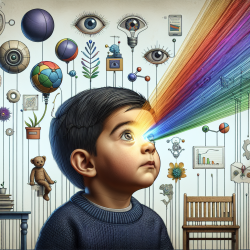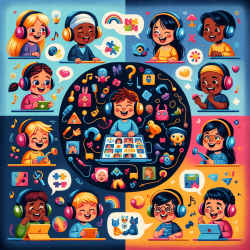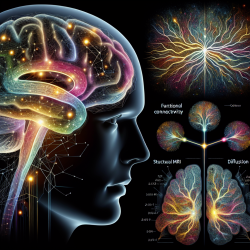Introduction
In the field of speech-language pathology, understanding how children perceive and process visual information is crucial for developing effective therapeutic strategies. A recent study titled "Distributed representations of behavior-derived object dimensions in the human visual system" offers insights that can enhance our understanding of visual processing beyond traditional object categorization. This blog explores the implications of this research for practitioners aiming to improve their skills and encourages further exploration of behavior-derived dimensions in visual processing.
Beyond Object Categories
Traditional views on visual processing suggest that the brain organizes objects into distinct categories, such as faces, tools, or body parts, to facilitate recognition and categorization. However, this category-centric framework may not fully capture the complexity of how our visual system processes information. The recent study challenges this notion by proposing a more comprehensive framework that incorporates behavior-derived dimensions.
Key Findings
The study utilized functional MRI (fMRI) responses to thousands of object images and paired them with representational dimensions derived from human similarity judgments. The results revealed that behavior-derived dimensions provide a better model for predicting brain responses than traditional categories. This finding suggests that the visual system is organized based on continuous dimensions that reflect more general object properties, such as animacy or real-world size, rather than discrete categories alone.
Implications for Practitioners
For speech-language pathologists, understanding these behavior-derived dimensions can enhance therapeutic approaches by providing a more nuanced understanding of how children perceive and interact with their visual environment. By focusing on these dimensions, practitioners can tailor interventions to support the development of visual processing skills that are crucial for effective communication and learning.
Encouraging Further Research
The study opens new avenues for research in visual processing and its implications for child development. Practitioners are encouraged to explore how behavior-derived dimensions can be integrated into assessment and intervention strategies. Further research could investigate how these dimensions influence language development and social communication skills in children.
Conclusion
By moving beyond traditional object categories and embracing a multidimensional framework, practitioners can gain a deeper understanding of visual processing and its impact on communication and learning. This approach aligns with data-driven decision-making and supports the creation of tailored interventions that promote positive outcomes for children.
To read the original research paper, please follow this link: Distributed representations of behavior-derived object dimensions in the human visual system.










